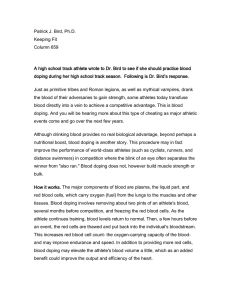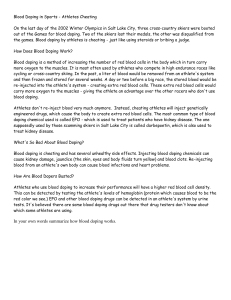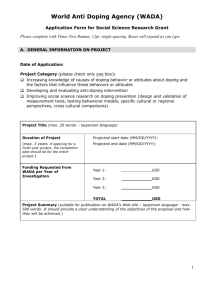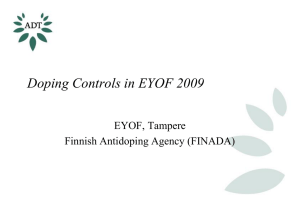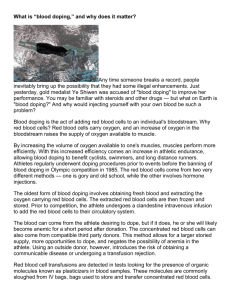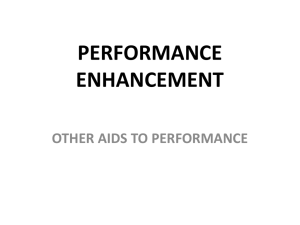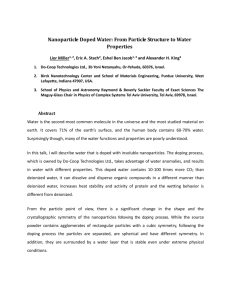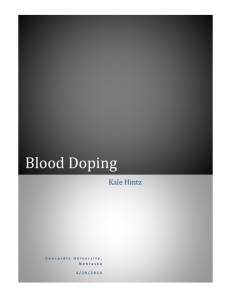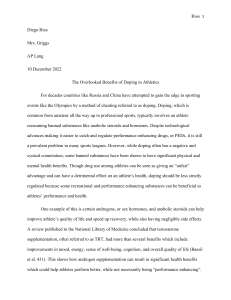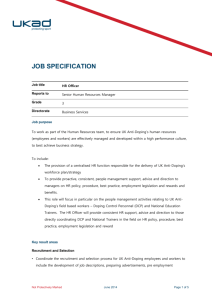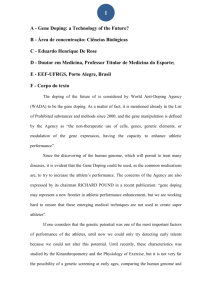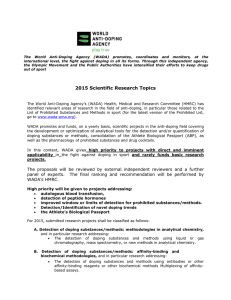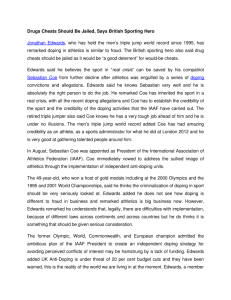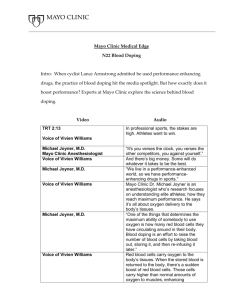Blood Doping
advertisement
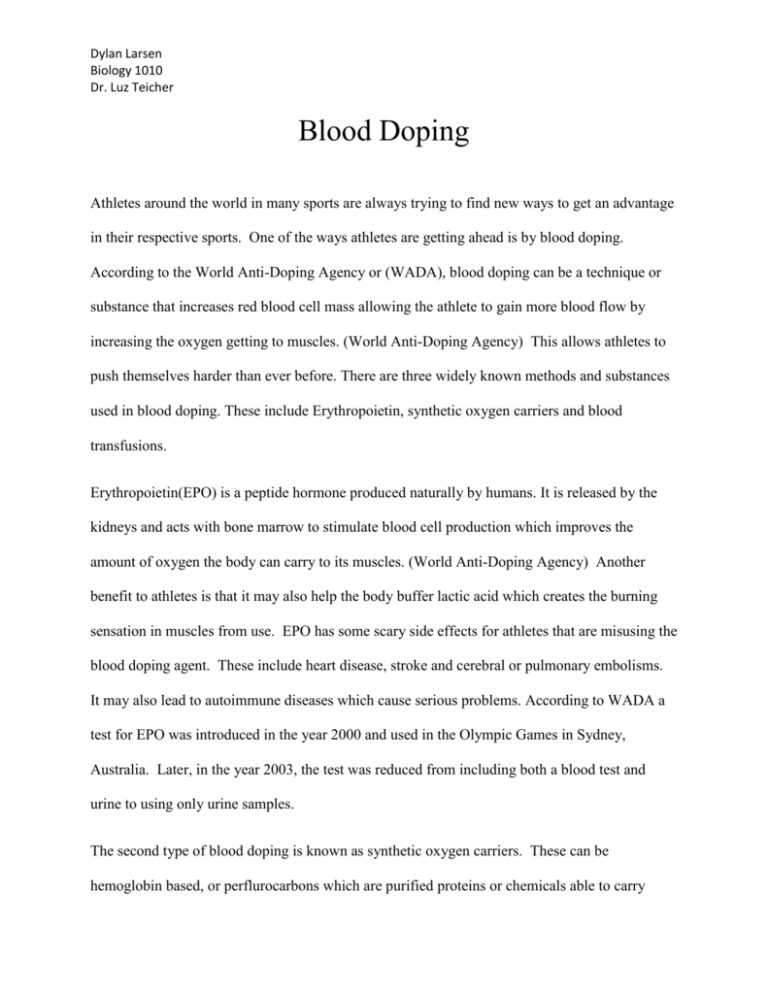
Dylan Larsen Biology 1010 Dr. Luz Teicher Blood Doping Athletes around the world in many sports are always trying to find new ways to get an advantage in their respective sports. One of the ways athletes are getting ahead is by blood doping. According to the World Anti-Doping Agency or (WADA), blood doping can be a technique or substance that increases red blood cell mass allowing the athlete to gain more blood flow by increasing the oxygen getting to muscles. (World Anti-Doping Agency) This allows athletes to push themselves harder than ever before. There are three widely known methods and substances used in blood doping. These include Erythropoietin, synthetic oxygen carriers and blood transfusions. Erythropoietin(EPO) is a peptide hormone produced naturally by humans. It is released by the kidneys and acts with bone marrow to stimulate blood cell production which improves the amount of oxygen the body can carry to its muscles. (World Anti-Doping Agency) Another benefit to athletes is that it may also help the body buffer lactic acid which creates the burning sensation in muscles from use. EPO has some scary side effects for athletes that are misusing the blood doping agent. These include heart disease, stroke and cerebral or pulmonary embolisms. It may also lead to autoimmune diseases which cause serious problems. According to WADA a test for EPO was introduced in the year 2000 and used in the Olympic Games in Sydney, Australia. Later, in the year 2003, the test was reduced from including both a blood test and urine to using only urine samples. The second type of blood doping is known as synthetic oxygen carriers. These can be hemoglobin based, or perflurocarbons which are purified proteins or chemicals able to carry Dylan Larsen Biology 1010 Dr. Luz Teicher oxygen. Synthetic oxygen carriers are used for therapeutic purposes when human blood isn’t readily available. Misuse can lead to cardiovascular disease or stroke. A test was found and implemented in the year 2004 for this type of blood doping. The third major type of blood doping is by blood transfusion. There are two ways to blood dope when using this method; these are either autologous or homologous. Autologous is when you use your own blood which you have stored by refrigerating or freezing it until needed. Homologous is when you take blood from another person with the same blood type. This type of doping has been around the longest and has had a recent resurgence due to new tests for EPO. A test for homologous blood transfusions was implemented at the Olympic Games is 2004. There is no current test for autologous blood transfusions. Blood transfusions can also lead to health risks especially if you are using someone else’s blood which may have a virus unwittingly passed on during transfusion. In the interest of saving athletes from the use of drugs which may lead to problems later in life it is important that Sports throughout the world test and ban substances and techniques that lead to greater performance. It is important that not only athletes but also the general public learn about the side effects of blood doping and the danger involved in misusing techniques designed to help sick people. Works Cited (n.d.). Retrieved from World Anti-Doping Agency: http://www.wada-ama.org/en/resources/q-anda/blood-doping/


